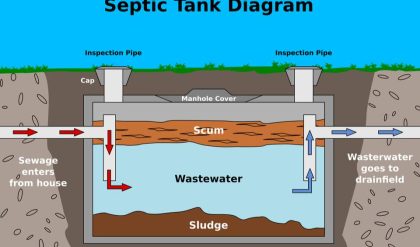Selection of the pumping equipment is a crucial point that determines both process parameters and in-use performance of the unit under development. During selection of the type of pump three groups of criteria can be distinguished:
1) Process and design requirements
2) Nature of pumped medium
3) Key design parameters
Process and design requirements:
In some cases the pump selection is determined by some stringent requirements for a number of design or process parameters. Unlike piston-type pumps, centrifugal pumps can provide uniform delivery of pumped medium, whereas in order to meet uniformity condition on a piston-type pump its design has to be made noticeably complicated, by arranging on the crankshaft several pistons making reciprocating movements with certain delay from each other. At the same time, delivery of pumped medium in discrete portions of set volume can also be a process requirement. Example of definitive design requirements can be the use of submerged pumps in cases, when it is necessary and only possible to install the pump below level of the pumped fluid.
The pump process and design requirements are seldom definitive, and ranges of suitable types of pumps for various specific cases of application are known as a matter of experience accumulated by humanity, and there is no need to enumerate them in detail.
Characteristics of the pumped medium often become a decisive factor in pumping equipment selection. Different types of pumps are suitable for pumping of various media differing in viscosity, toxicity, abrasiveness and many other parameters. So screw pumps can pump viscous media with different inclusions without damaging structure of the medium, and can successfully be used in food-processing industry for pumping of jams and pastes with various fillers. Corrosion properties of the pumped medium determine material design of the selected pump, and toxicity – degree of its air-tightness.
Operational requirements specified by different industries can be satisfied by several types of pumps. In the situation like this preference is given to the type of pump which is most suitable under concrete values of key design parameters (capacity, head and power consumption). Tables which in general terms reflect application boundaries of most wide-spread types of pumps are given below.
Field of application (selection) of pumps by the created head
| Under 10 m | From 10 to 100 m | From 100 to 1,000 m | From 1,000 to 10,000 m | From 10,000 m and over |
| One-stage centrifugal pumps | ||||
| Multistage centrifugal pumps | ||||
| Axial flow pumps (head is up to 20-30 m) | ||||
| Piston pumps | ||||
| Screw pumps | ||||
| Plunger pumps | ||||
| Vortex pumps |
Fields of application (selection) of pumps by capacity
| Under 10 m3/h | From 10 tо 100 m3/h | From 100 to 1,000 m3/h | From 1,000 to 10,000 m3/h | From 10,000 m3/h and over |
| One-stage centrifugal pumps | ||||
| Multistage centrifugal pumps | ||||
| Axial flow pumps | ||||
| Piston pumps | ||||
| Screw pumps | ||||
| Plunger pumps | ||||
| Vortex pumps |
Only the pump which corresponds to all three groups of criteria can guarantee long-term and reliabl




Comments are closed.